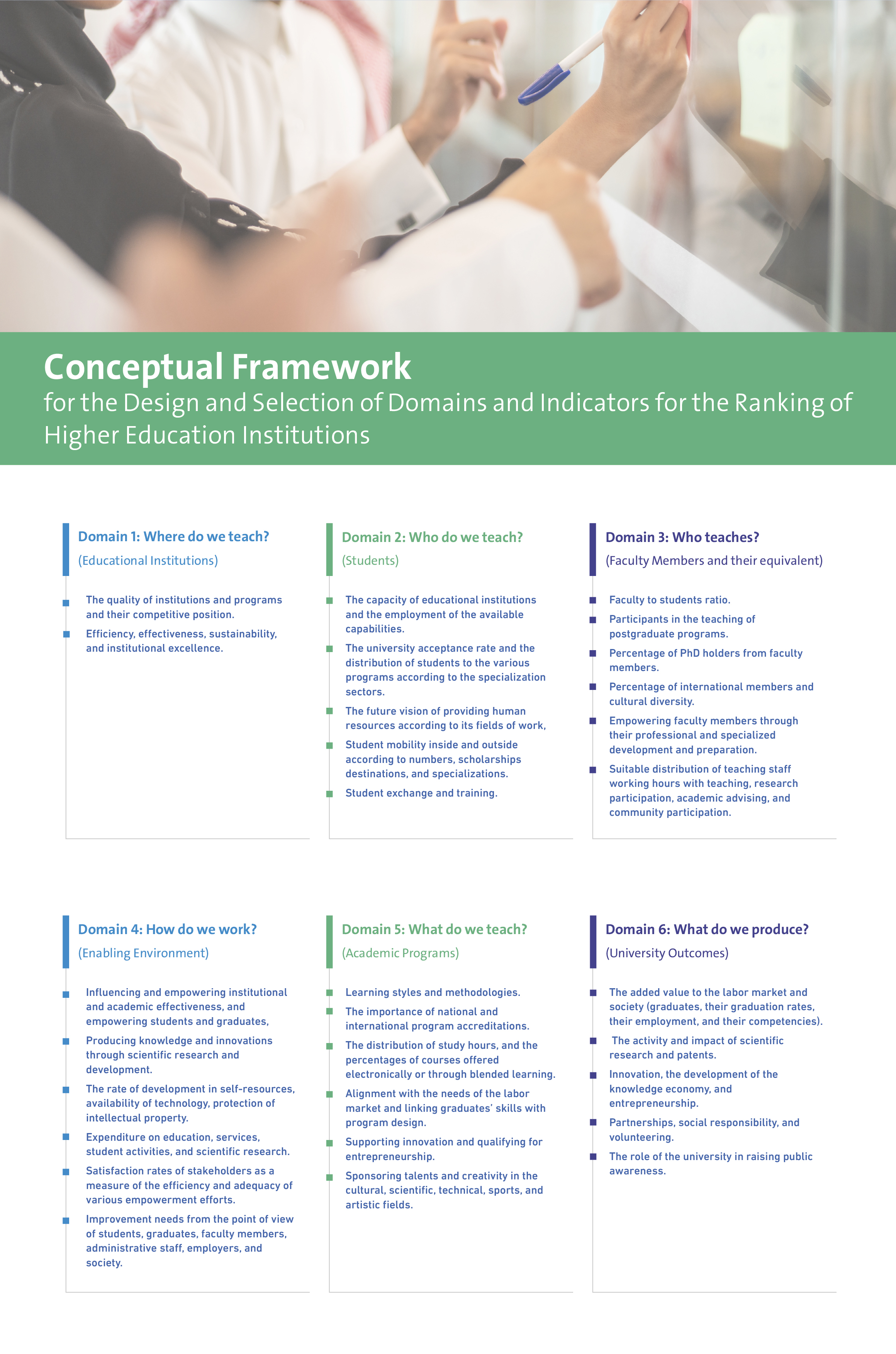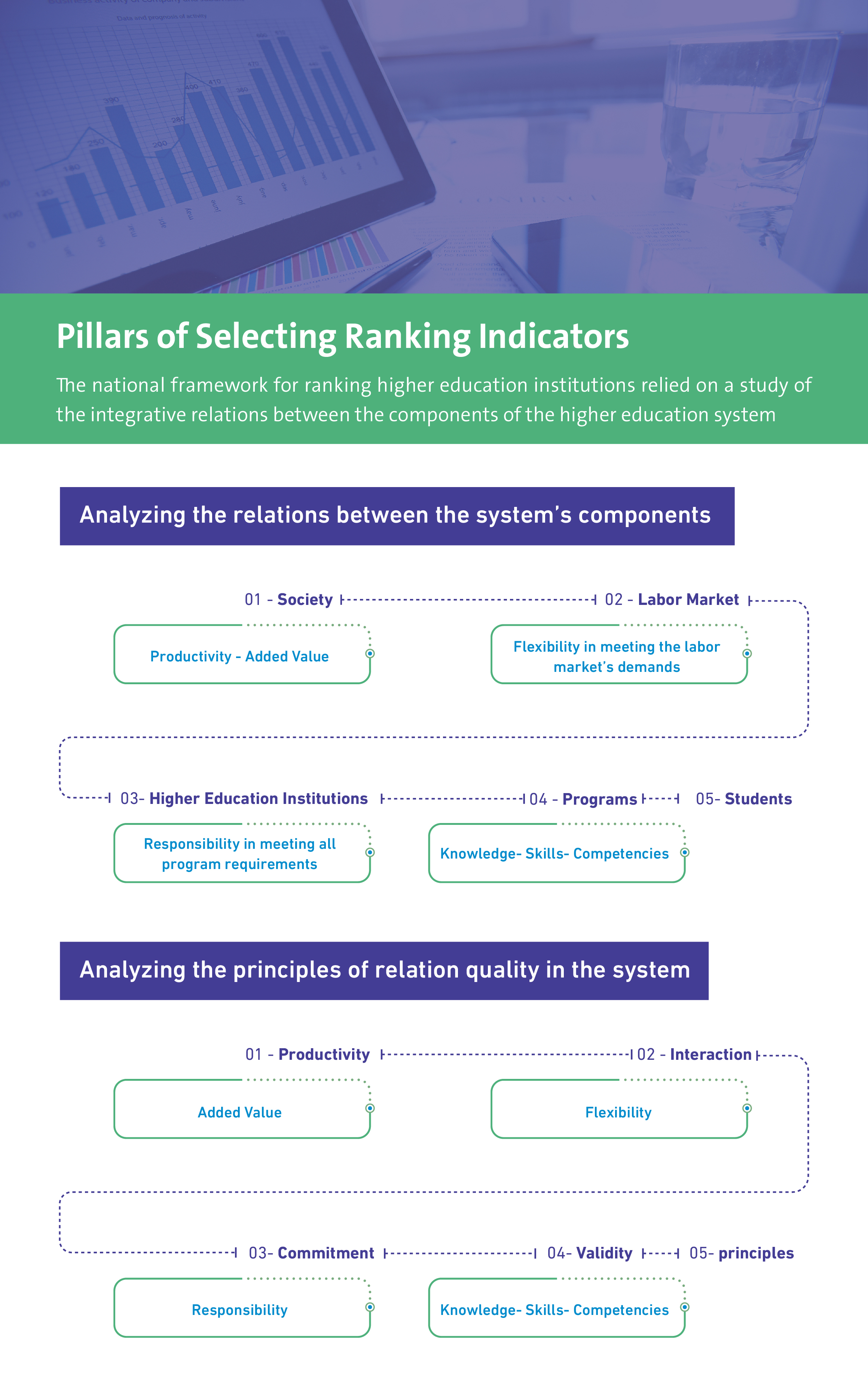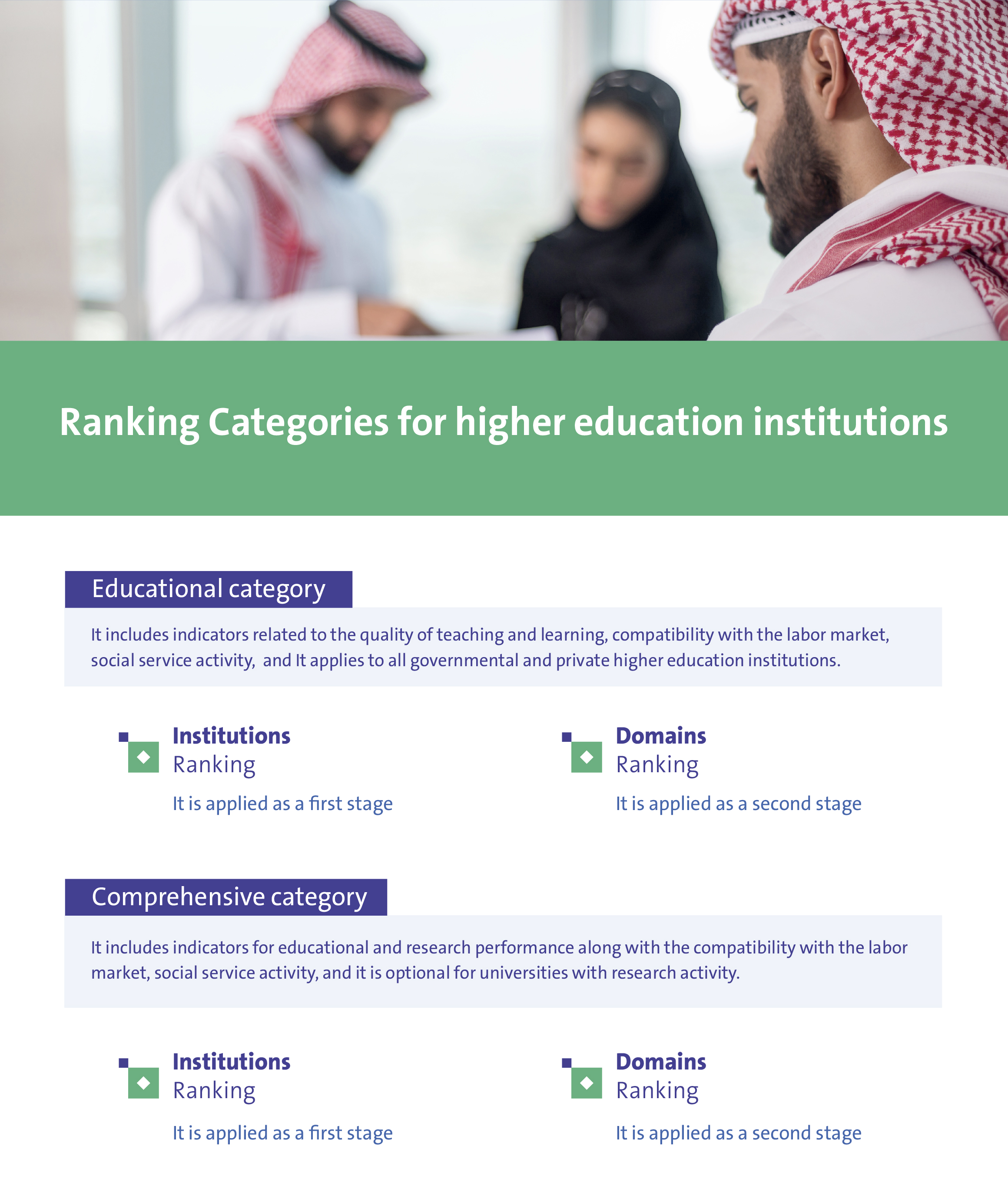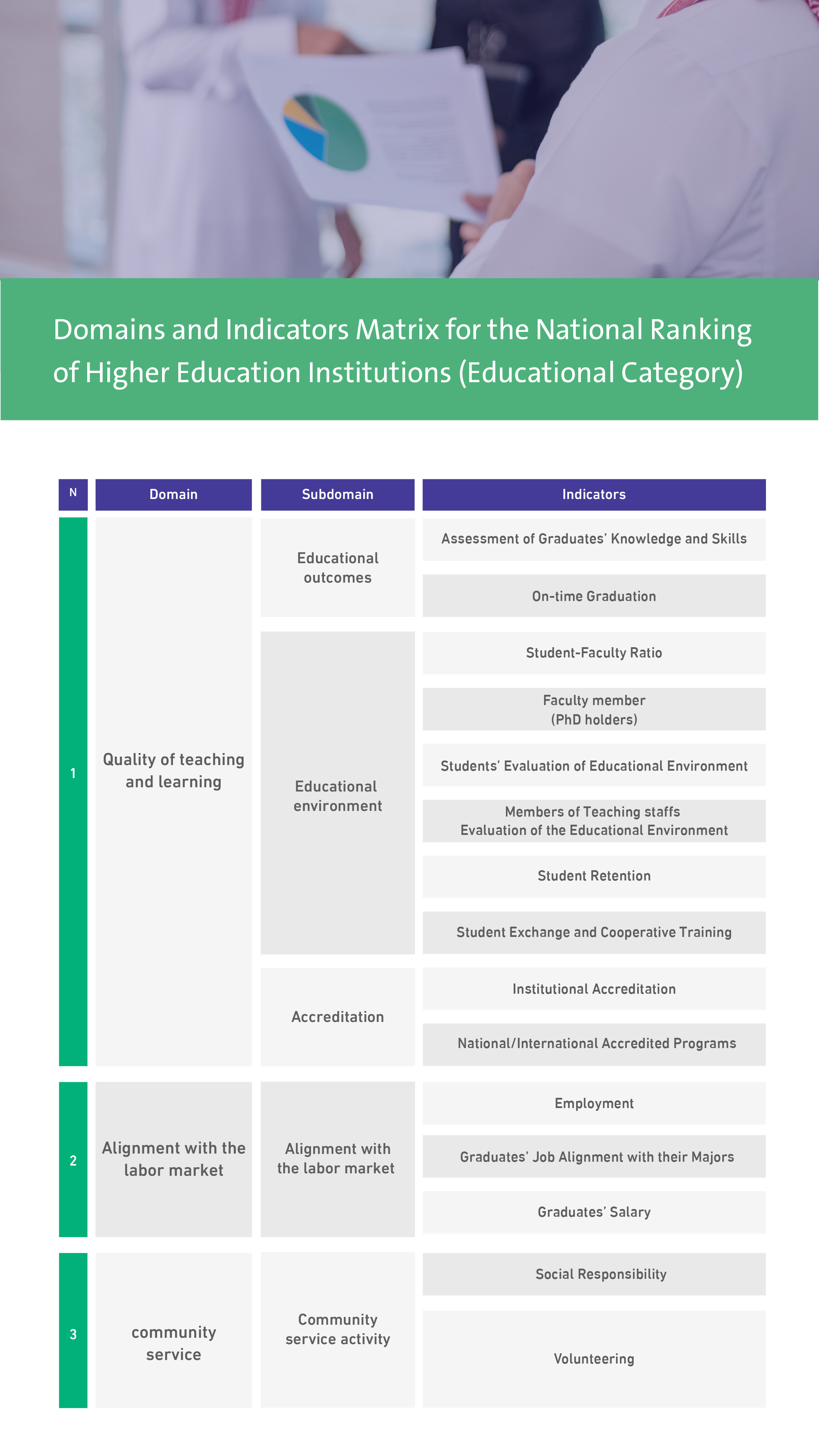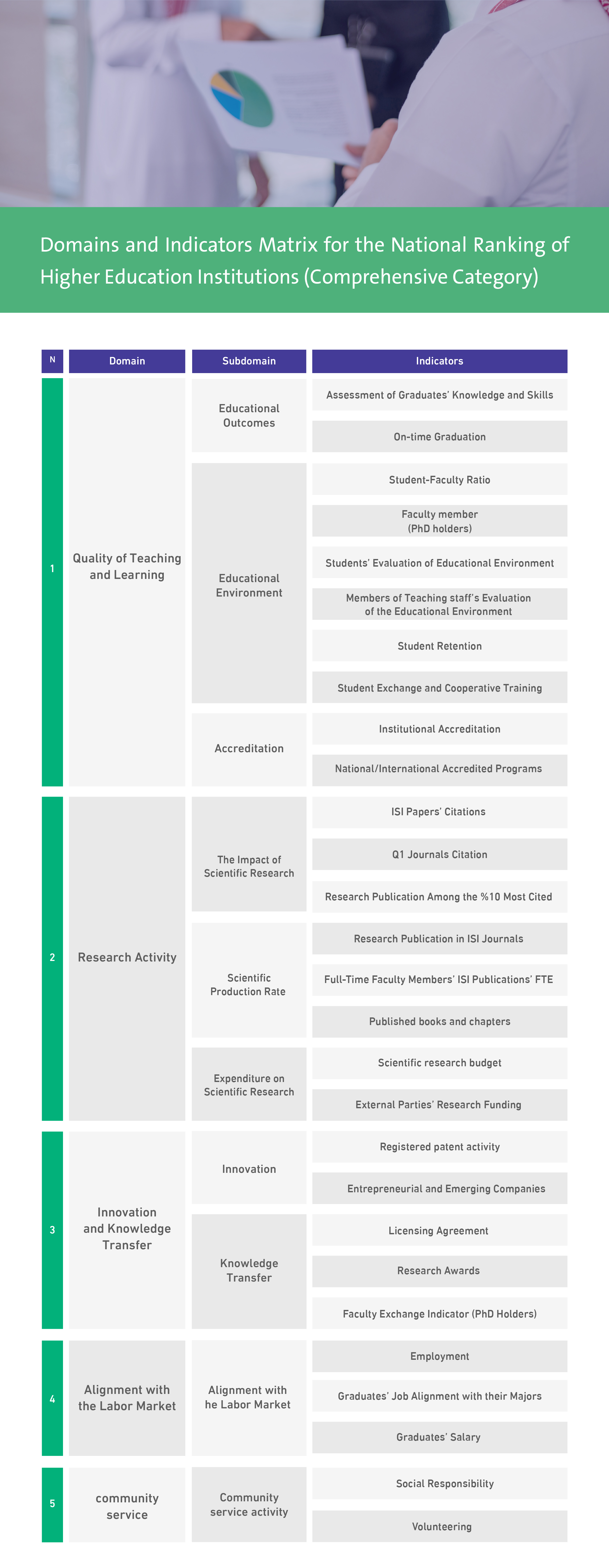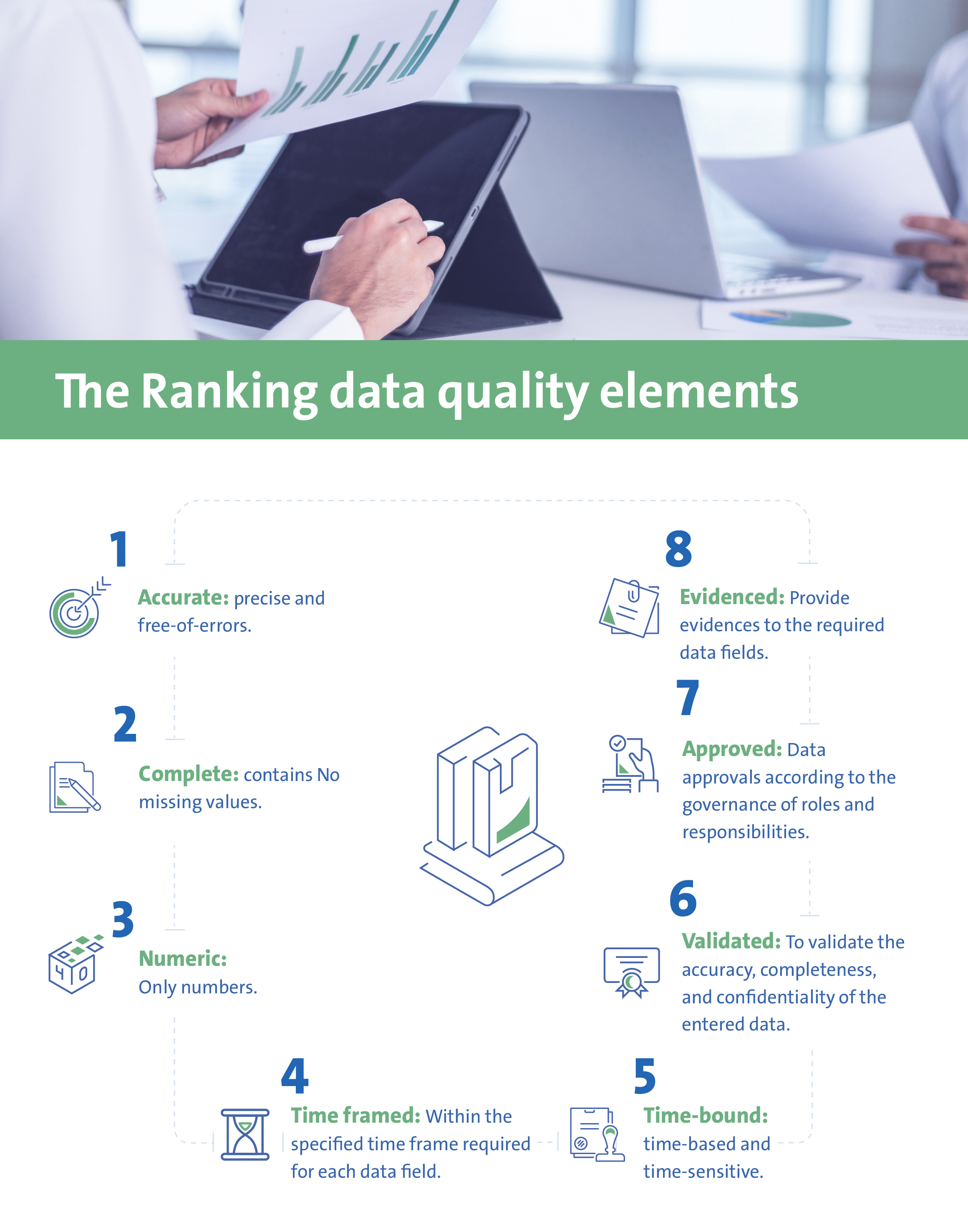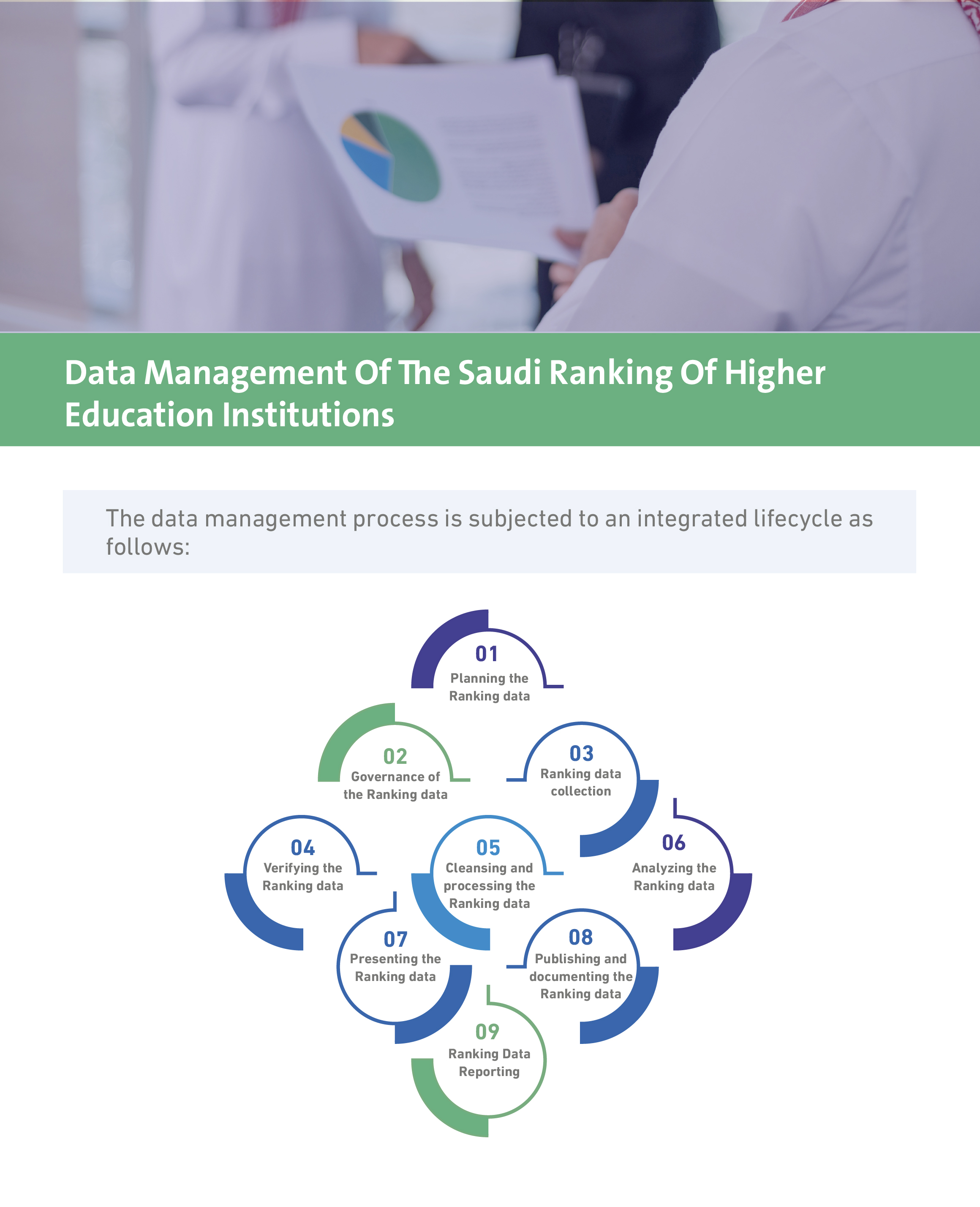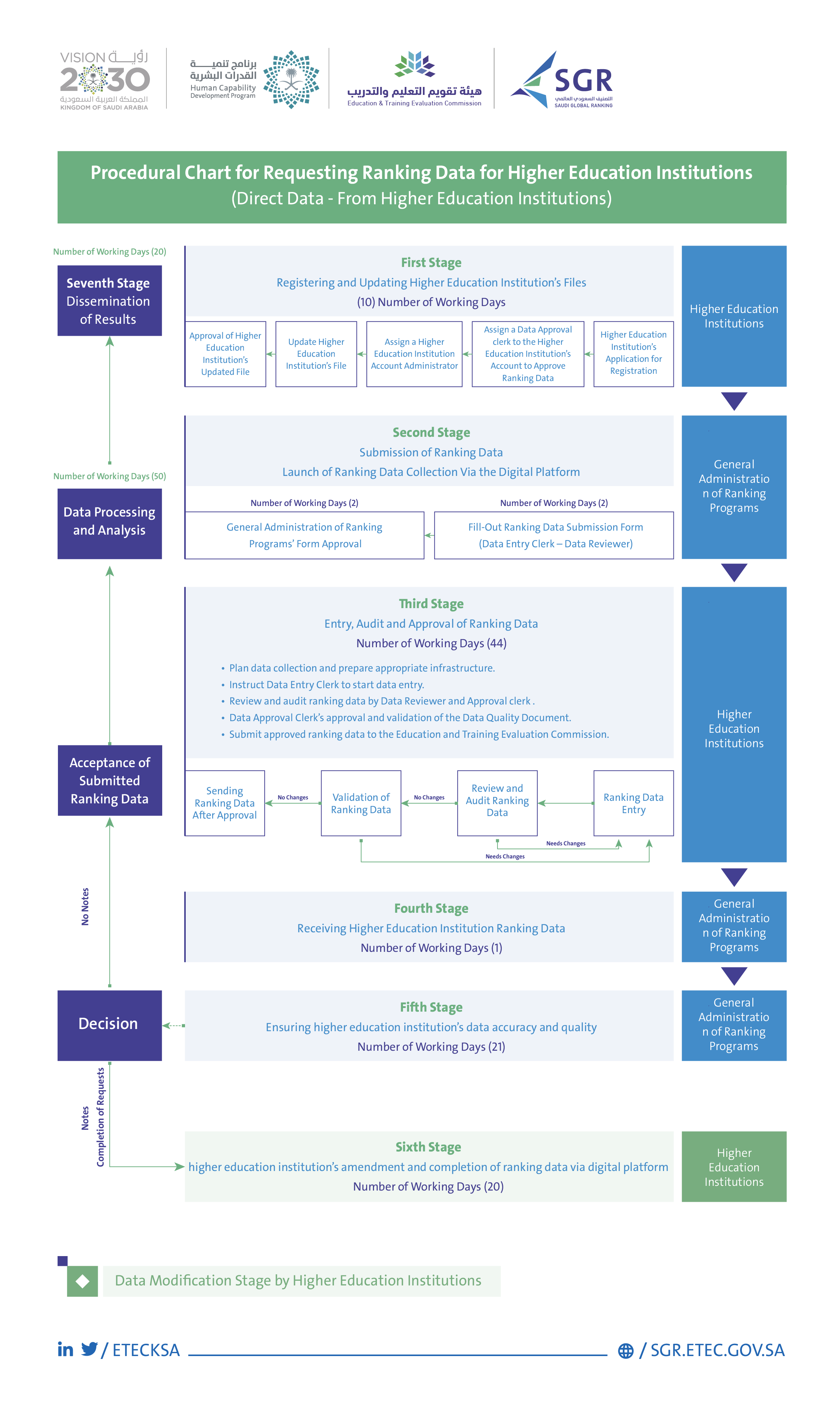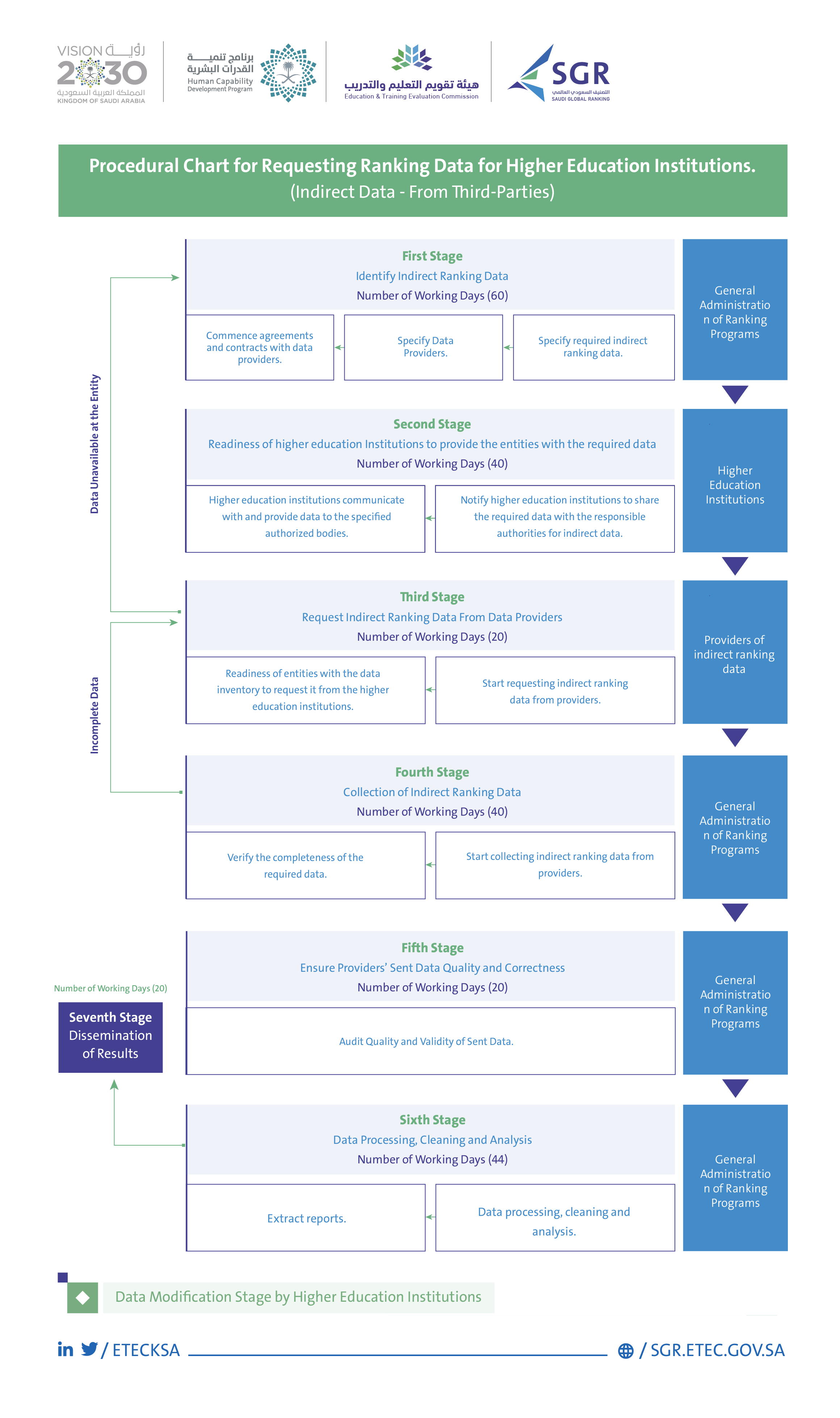
Saudi Global Ranking (SGR)
For higher education institutions



 About Ranking
About Ranking
The Ranking of higher education institutions is very significant at the global level, because it reflects the position of the educational institution among national and international higher education institutions, also It emphasizes its strengths and shows potential areas of development, and from this standpoint, the Education and Training Evaluation Commission has sought to contribute to enhance the quality and excellence in higher education institutions and programs. By Ranking those institutions, which is an extension and integration with both institutional and program accreditation.، Contributing to continuous development and positive competitiveness that is reflected in the quality of performance, and in its turn of participation to the development, application and dissemination of knowledge through education and scientific research, and the promotion of social responsibility and volunteering. In order to ensure a responsible higher education and technical and vocational training system, the Ranking of Higher Education Institutions initiative of the Human Capacity Development Program was included in the portfolio of initiatives of the second pillar. This is one of the most significant pillars of comprehensive development in the Kingdom of Saudi Arabia and one of the most significant key factors to achieve the ambitious goals of the Kingdom's Vision 2030.
Ranking Definition
The ranking is defined as a method for ranking education and training institutions, based on measuring their performance in specific areas. It operates through a procedural framework using an acknowledged methodology whereby institutions demonstrate their performance according to fixed measures, and indicators. This reveals their strength or need for development according to their level of ranking and specific ranking categories which aims to shed light on the aspects affecting the improvement of higher education and training quality, capabilities, and outcomes, as well as increase competitiveness, improve their ranks in the international rankings and enable their students and other entities to make appropriate decisions.
Targeted segment
Public and Independent
Universities and Colleges.
Private
Universities and Colleges.
 Ranking Objectives
Ranking Objectives
Enhancing quality and excellence in the educational process.
Institutional excellence for higher education institutions.
Raising the level of efficiency, effectiveness, and sustainability.
Alignment with the labor market, empowering the community, and promoting sustainable development.
Stimulating research, development, and innovation.


 Ranking Methodology
Ranking Methodology
The Education and Training Evaluation Commission developed a methodology for designing the ranking categories, relying on a conceptual framework and pillars for selecting ranking indicators, which gave rise to ranking categories and a matrix. This methodology was represented by the General Administration of Ranking Programs.

 Ranking Guides
Ranking Guides
The Saudi Ranking of Higher Education Institutions Rules and Provisions
The Saudi Ranking of Higher Education Institutions Terminology Guide
The Saudi Ranking of Higher Education Institutions Frequently Asked Questions Guide
Card Guide
(Educational and Comprehensive Category)
E-Services Directory for accreditation and Ranking Digital Platform
 Submit Ranking Data
Submit Ranking Data
Digital Platform
E-Services Guide PDF
E-Services Guide Video
Unified Support Platform
Registration and Update Educational Institution Profile
Submit Ranking data

 Videos
Videos

Data Submitting Request Tutorial Clip

Data Entry Tutorial Clip

Data Review Tutorial Clip

Data Approval Tutorial Clip
 Ranking Results
Ranking Results
The approved annual ranking results are displayed here.

 FAQ
FAQ
- Enhance educational process’ quality and excellence.
- Higher education institutions’ Institutional excellence.
- Raise the level of efficiency, effectiveness and sustainability.
- Align with the labor market, empower society and promote sustainable development.
- Stimulate research, development, and innovation.
- Descending order
- Ranking Categories and Indicators
- Higher Education Institutions Reports
- Achieves several targets of the Human Capability Development Program
- Promotes a development strategy to achieve excellence and leading performance in global rankings.
- Motivates higher education institutions to attract international talents
- Promotes social responsibility and volunteering.
- Contributes in enabling the leaders to take the necessary measures to address gaps in quality and provide them with data and results to support decision-making, improve spending efficiency and to invest in resources.
- Provides proactive diagnostic indicators that support decision-making and improve expenditure efficiency and resources investment.
- Identifies the strengths and shortcomings of higher education institutions, in addition to identifying their development requirements.
- Promotes a culture of competitiveness and development among higher education and training institutions.
- Promotes the alignment of education outcomes with labor market needs.
- Provides career options for faculty members
- Encourages cooperation in the fields of scientific research and development with the private sector.
- It enhances society's educational opportunities to high-quality education by giving parents and students as well an objective criterion for comparing higher education institutions and choosing the suitable one to enroll in.
- Contributes to increased after-graduation employment rates.
- Motivates partnerships with international exchange programs to encourage students to study abroad.
- Motivates the parents’ involvement in the educational process.
- Launching the ranking in a trial phase (participation of a number of educational institutions).
- Holding several workshops with officials from public and private educational institutions participating in the trial phase.
- Develop and review indicators and methods, after obtaining feedback from participating educational institutions.
